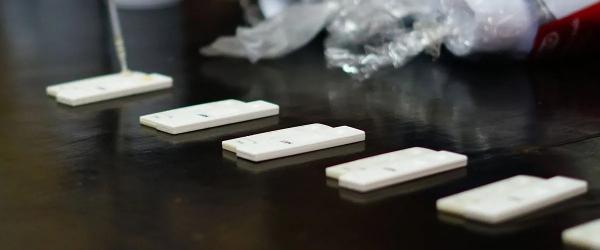NZ Wastewater Data Shows Drug Harm Still Costs Millions

The latest National Drugs in Wastewater Testing Programme results, released by New Zealand Police, reveal that while some illicit drug use has declined in the second quarter of 2025, the ongoing social and economic harm remains immense.
Testing, which covers approximately 77% of the national population, focused on methamphetamine, MDMA, and cocaine, the three most commonly detected substances in New Zealand wastewater. Together, these drugs are responsible for an estimated $33 million in social harm every week, according to the report.
Methamphetamine: Still New Zealand’s Most Harmful Drug
Methamphetamine continues to pose the greatest risk to communities and workplaces across the country. The report found an average of 29.1 kilograms consumed per week between April and June 2025 - a slight 2% decrease from the average across the previous year.
Despite this marginal drop, several districts continued to record above-average methamphetamine use, particularly in April 2025, when consumption peaked in certain areas. The estimated weekly social harm cost of methamphetamine alone sits at $30.5 million.
“These figures reflect what many employers across New Zealand are experiencing - ongoing exposure to drug-related risks in the workplace,” says Kyly Coombes of Resultz Group, one of the country’s leading providers of workplace drug testing. “Regular, professional testing remains essential for safety, compliance, and staff wellbeing.”
MDMA: Noticeable Drop, but Regional Variations
The report shows that MDMA consumption dropped by 16% compared to the previous four-quarter average, with an estimated 6.0 kilograms consumed weekly. Only the Central and Eastern districts recorded increases, suggesting regional spikes amid a general national decline.
Even so, MDMA continues to represent a significant concern, with a weekly social harm cost of $1.3 million.
Cocaine: Small But Rising Trend
Cocaine use remains relatively low nationwide but is showing early signs of growth. The report found 4.5 kilograms consumed per week, 8% higher than the average across the previous four quarters.
Most districts recorded above-average cocaine consumption, with the highest per capita rates appearing in Tāmaki Makaurau (Auckland) and Bay of Plenty.
This growing trend comes with an estimated weekly social harm cost of $1.7 million, underscoring that drug-related risks are diversifying beyond methamphetamine alone.
Regional Insights: Localised Challenges Across the Country
Per capita analysis shows that Northland, Waikato, and Eastern districts continue to lead in methamphetamine consumption - all exceeding 1,600 mg/day per 1,000 people.
Meanwhile, MDMA use was comparatively higher in Southern, Tasman, and Canterbury districts, and cocaine consumption was most pronounced in Auckland and Bay of Plenty.
Since October 2023, the wastewater testing programme has expanded its coverage, improving the visibility of regional drug patterns across the country. This expansion helps local authorities and community leaders better understand where harm reduction efforts are most needed.
The Workplace Connection
According to Resultz Group, the wastewater findings highlight a clear reality - drug use remains an issue that inevitably reaches into New Zealand workplaces.
“Employers are on the front line of identifying and addressing drug-related risks,” says the spokesperson. “By maintaining robust testing policies, investing in education, and supporting rehabilitation where possible, businesses can protect both their teams and their reputation.”
With tens of millions of dollars in social harm occurring each week from methamphetamine, MDMA, and cocaine use, Resultz Group is urging New Zealand employers to maintain consistent, compliant workplace testing programmes that include education, training, and rehabilitation. A comprehensive, wraparound support system is vital to protecting both businesses and staff.
